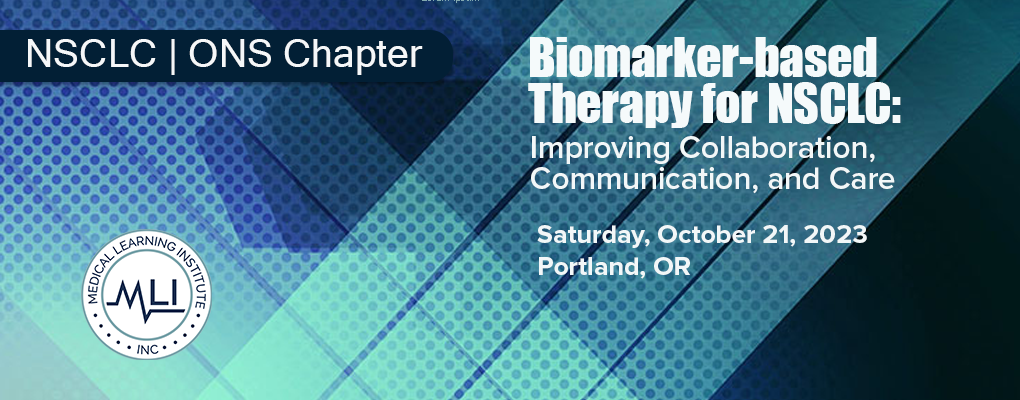
This CE activity is intended for oncology nurses and nurse practitioners who provide care for individuals with non-small cell lung cancer (NSCLC).
After completing this CE activity, the participant should be better able to:
- Evaluate the implications of test results for prognosis, treatment selection, and patient education
- Collaborate with team members to apply guidelines and best practices for biomarker testing and address barriers to testing
- Assess emerging safety and efficacy data for new and novel targeted therapies, including those to manage acquired resistance
- Plan strategies to prevent and mitigate AEs of targeted therapy, including engaging patients of diverse background in prevention and monitoring
 In support of improving patient care, Medical Learning Institute, Inc. is jointly accredited by the Accreditation Council for Continuing Medical Education (ACCME), the Accreditation Council for Pharmacy Education (ACPE), and the American Nurses Credentialing Center (ANCC), to provide continuing education for the healthcare team.
In support of improving patient care, Medical Learning Institute, Inc. is jointly accredited by the Accreditation Council for Continuing Medical Education (ACCME), the Accreditation Council for Pharmacy Education (ACPE), and the American Nurses Credentialing Center (ANCC), to provide continuing education for the healthcare team.
Nursing Continuing Professional Development
Successful completion of this nursing continuing professional development activity will be awarded 1.0 contact hours and 1.0 contact hours in the area of pharmacology.
Supporter
The activity is supported by educational funding provided by Amgen and by an educational grant from Janssen Biotech, Inc., administered by Janssen Scientific Affairs, LLC
